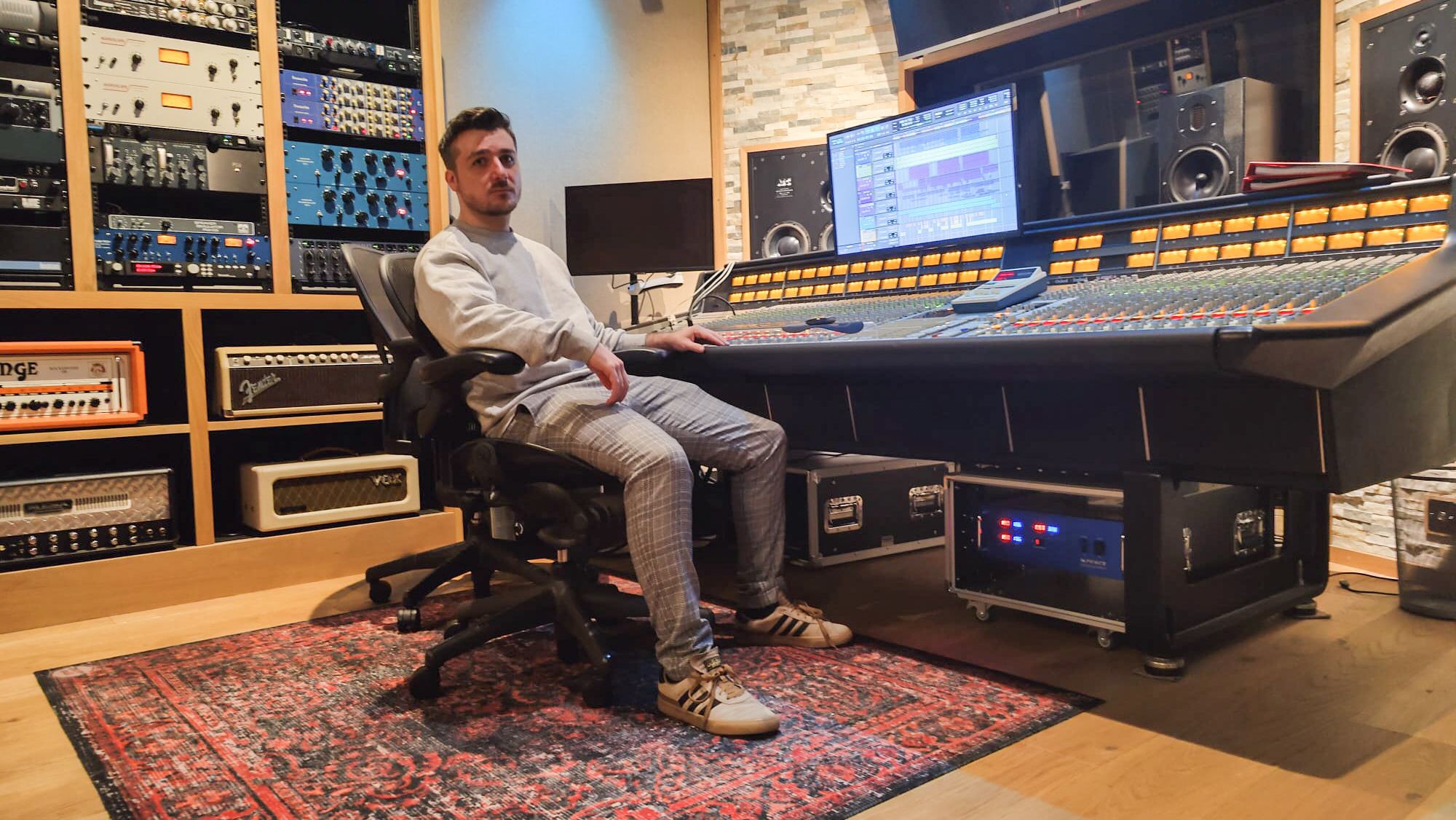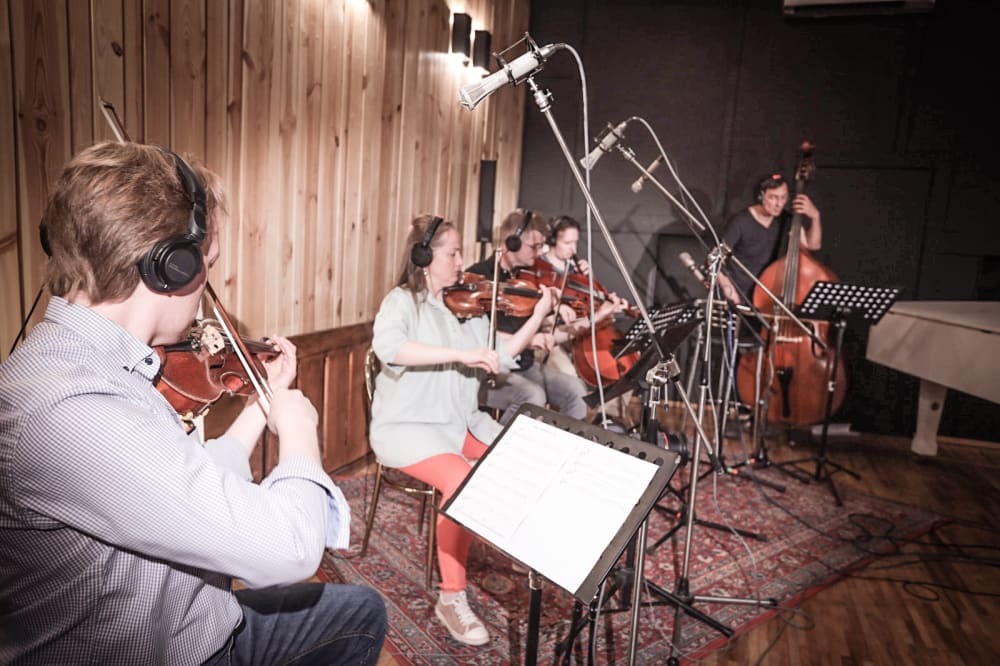
Behind the Music: In conversation with LCF23 Catwalk composer

- Written byJ Igiri
- Published date 02 March 2023

Luigino D’Andrea is the composer, producer and musician behind the #LCF23 Catwalk soundtrack. We caught up with Luigino to learn about the process of creating bespoke music for this year’s MA Fashion Design Technology: Menswear and MA Fashion Design Technology: Womenswear postgraduate collections.
#LCF23 Catwalk Show
Please introduce yourself and tell us a bit about what you do.
Hi, my name is Luigino D'Andrea. I am a multi-instrumentalist, specialising in composing and recording bespoke music for visual projects and events. Aside from writing for commissioned projects, I have also written and released two classical themed albums, and one EDM record under the name Stereochaser. I work primarily out of my home studio in Surrey and compose most of my music on a piano.

You describe yourself as a composer, producer, and musician. What does this mean to you?
Having experience across each of these fields simplifies the process, as most parts of a project can be handled in house. I write a piece of music, I hit record, and then I mix it. I like the flexibility that comes with having my own means to record because ultimately it gives me more control in achieving my desired sound. It also allows me to take on projects with a tighter deadline because I don't need to worry about outsourcing bits and pieces that I can do myself. Sometimes I do need to get things recorded elsewhere, and having an understanding of what a musician requires to perform your piece for you comes from spending time developing your skills in these three areas. They're certainly not essential but can help tremendously.

What and/or who inspires your work?
I would say that my own work is heavily influenced by film and tv scores. The music that I enjoy listening to doesn't really correspond to the style of music that I create, but singer / songwriters like Katie Crutchfield of Waxahatchee inspire me in other ways because I love her writing style, lyrics and raw sound. I can listen to her songs any time of day.
Can you tell us about the process of making the LCF23 soundtrack?
The complete score took me one month to compose, record and produce from scratch. It features twisted vocals that I bent out of shape in the studio, swarming orchestral passages driven by pulsing synths, and crushing live rock drums which I played over the top of electronic drums. But like most of my music, the LCF23 soundtrack began life as a simple tune in my head which I fleshed out behind a piano into several broken parts of a score.

After an initial consultation with Creative Director, Rob Philips, to discuss the possible themes for the catwalk, I wrote a few ideas down in my notebook. This ranged from random key words describing timbre or feeling, random instruments we felt would work well together and sketches of musician placement for recording. I then spent several sessions in pre-production developing these ideas and breaking them down into separate parts and assigning them to various other instruments. I had my strings parts transcribed into sheet music and sent off to be recorded remotely with various musicians around the world. I had a solo violinist run through a really early version of the score, and a strings quintet play through the mid-section for me. When I got these parts back, I built around them in the studio to create a full scaled, symphonic orchestral sound using various layering production techniques, and slowly the soundtrack started to come to life.

For the electronic parts, I created my own sounds, again by playing synthesisers through various pedals and pieces of hardware. I added weight to various sections by playing guitar and piano over the top, sometimes improvising. The final arrangement includes over 100 layers of music and sound.
In many ways the music feels like a direct accompaniment to the different collections. What themes and ideas did you intend to convey throughout?
I believe that there is a strong connection between music and fashion in the sense that there are things you can describe with music that can't be described with words.
For example, the opening collection was intended to be showcased from the female perspective of deconstructed elements of a wedding ceremony - so, I used a solo female voice, but opened it up and layered it many times over a single strike on a double bass. I then added a lot of reverb and EQ'd it to really carve out the sound of the bow bouncing off the string. I then created a beautiful harmony out of the voice by creating chords out of the individual deconstructed notes and played them on a keyboard. The result was something really quite gothic which I was very pleased with.

Another designer created a collection based on artefacts that they feel have been interfered with by humans, exploring the relationship between craft and technology. With this collection in mind, I wrote parts for the cello and violin because these instruments are very much living and breathing in the way they are expressively played. Over the top, I created melodies with instruments that were warped, digitalised and distorted. The end result was a contrast in sound which I felt mirrored the collections' contrast between nature and technology.
The music takes the listener on a unique journey, similar to a cinematic score or game soundtrack. How does storytelling influence your compositions?
Storytelling is a huge part of what I do, especially when it comes to writing music for catwalks. Just like any good story, if you want to keep people interested - it needs to flow and have movement. There must be contrasting high and low points in dynamics, emotion and power. Whether it's a gritty bassline I've played on a synth or a dreamlike phrase I wrote on a piano or for violin, it all needs to have a purpose and a place in the overall story. The recurring theme I wrote for two cellos in LCF23 is answered by similar phrases which I played on the vintage synthesisers later on, and slowly they become one with each other and eventually play at the same time. So, in a sense, these instruments are all just different characters interacting with one another.

What are the important things to consider when making music for catwalks?
First and foremost, I need to shift my mindset away from creating a "normal" structured piece of music. If I am writing a pop or electronic dance track, I know l need a verse / chorus and one big hook. If I am writing a short piece for an advert to sell a product, my main theme needs to peak much faster for maximum engagement. With a catwalk, my theme needs to develop and grow over a much larger scale of time.
Another consideration is to remember that the music is there to compliment the work of the designer. Tempo is the driving force for this because it can dictate energy and confidence to the model who then conveys it to the audience with their presence. This doesn't mean that everything needs to be strictly "on the grid" when you're mixing your session, but the foundation of your mix should be absolutely rock solid so that the lead parts can be fluid and move freely over the top.
- Stay up to date with LCF Postgraduate Degree Show 2023
- View more work on the UAL Graduate Showcase
- Find out more about LCF's Move
- Explore LCF Postgraduate courses
- What’s on at LCF: open days and events